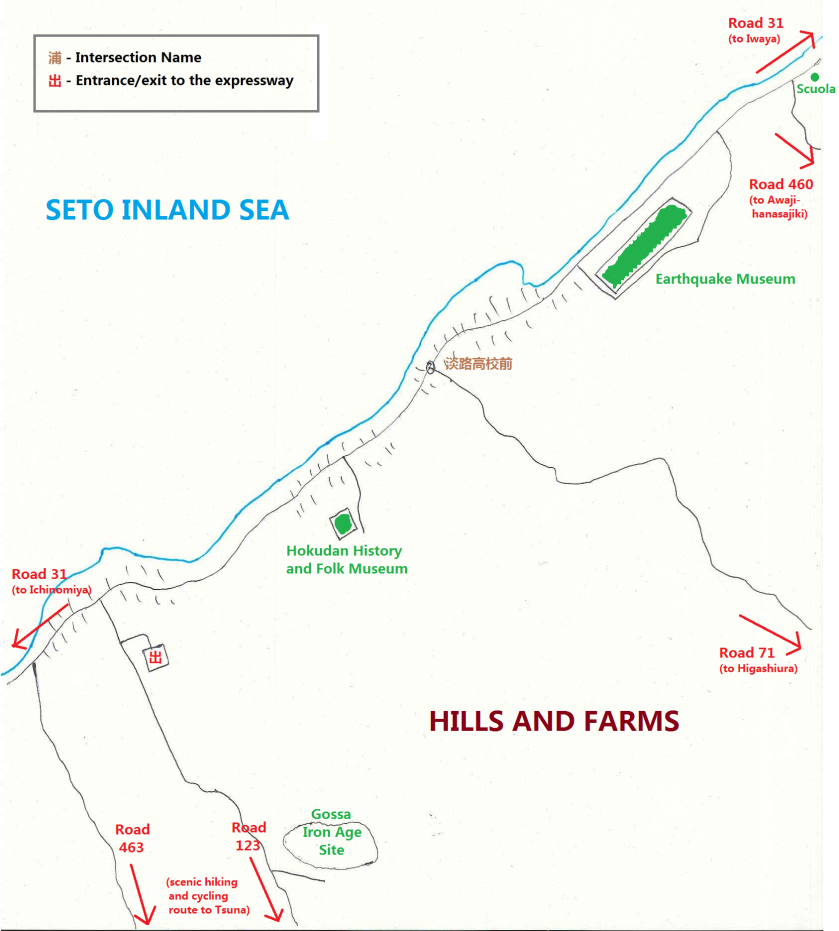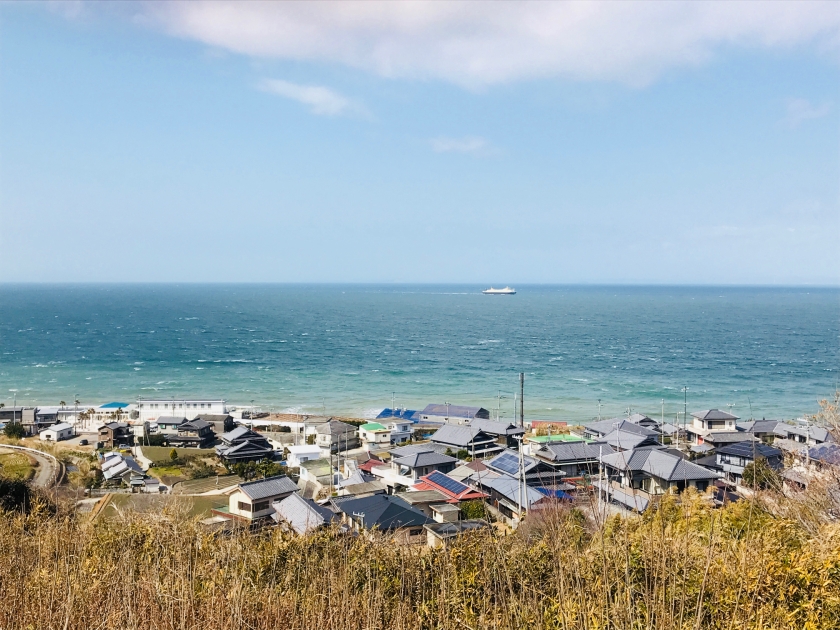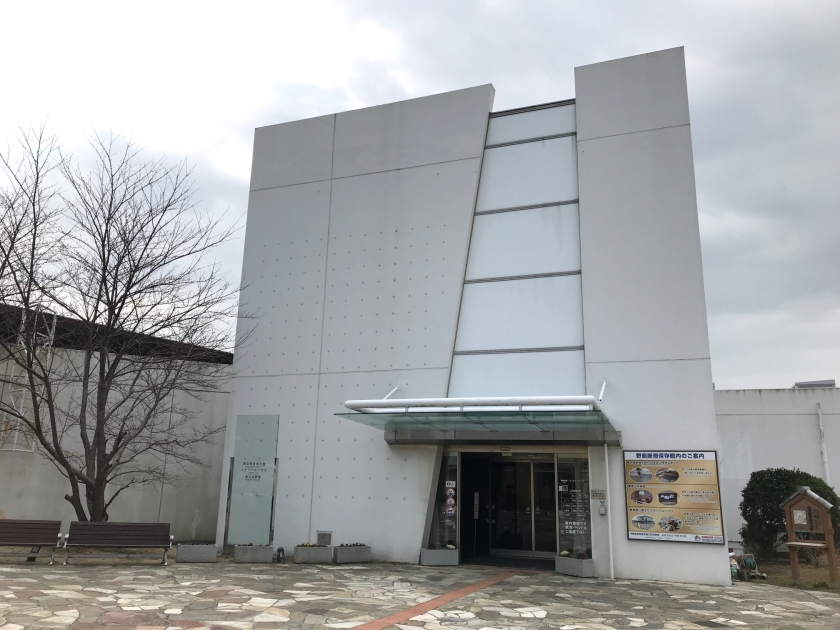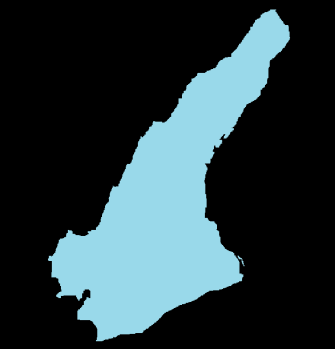北淡

ABOUT
Hokudan is the name of a former town, occupying a section of rugged coast in the north of the island. There’s no real town center here, just a string of small villages along the coast, and even smaller ones in the hills that lie inland. The area’s one site of real note is the Earthquake Museum, dedicated to the catastrophic quake of 1995. Apart from that, the narrow rural roads of Hokudan make for pleasant driving or cycling, and very fine views.

ATTRACTIONS
There are few specific attractions in Hokudan, though I personally believe that the region’s Earthquake Museum is Awaji’s single most interesting sight. It preserves a section of the fault line which ruptured during the great Kobe earthquake of 1995, and allows you a first hand look at what exactly an earthquake does.
Another attraction is the Gossa Iron Age Site, which lies in hilly farm country between Hokudan and Tsuna. It’s Awaji’s most important archeological site, where ancient Japanese lived and forged iron tools some 2000 years ago. The low-key Hokudan History and Folk Museum is also in Hokudan. It sits in a coastal village a few kilometers south of the Earthquake Museum. In the opposite direction, to the north of the Earthquake Museum, is the unusual tourist development of Scuola. Housed in a former elementary school, it’s home to souvenir stores and restaurants, as well as some alpacas and goats.
There are also a few small beaches along the coast in Hokudan, and of course, plenty of little temples and shrines.

TRANSPORT
The narrow 31 parallels the coast all the way down through Hokudan, making for scenic driving or cycling. The 71 is the main cross-island road in the north of the island, linking Higashiura with Hokudan, and traversed by local buses. The 71 is a very picturesque road passing through local farmland, though cyclists will find sections of it very steep.
Parts of southern Hokudan are linked by direct bus to Maiko and Sannomiya, and also to Fukura (see here). For the Earthquake Museum, there are a couple of local bus options:
Awaji-shi Buses – Links the Earthquake Museum and other areas of Hokudan with Iwaya and Higashiura.
Tsuna Hokudan Route – Links the Earthquake Museum with Tsuna and Ichinomiya.
Note that the expressway exit, shown in the map above, also functions as a bus stop for both local buses and buses running along the expressway.
There is no public transport to the Gossa Iron Age Site.
TIPS
Anyone interested in learning more about the 1995 earthquake should head to Hokudan to visit the Earthquake Museum. Those with more time could explore the hills or the Gossa Iron Age Site, while cyclists doing a loop of Awaji are likely to ride through on the 31 on their way back to Iwaya. Fancy seeing an alpaca, on the opposite side of the world from the Andes? Head to the old elementary school now known as Scuola.
There are a small number of accommodation options in Hokudan for those wishing to spend the night.

